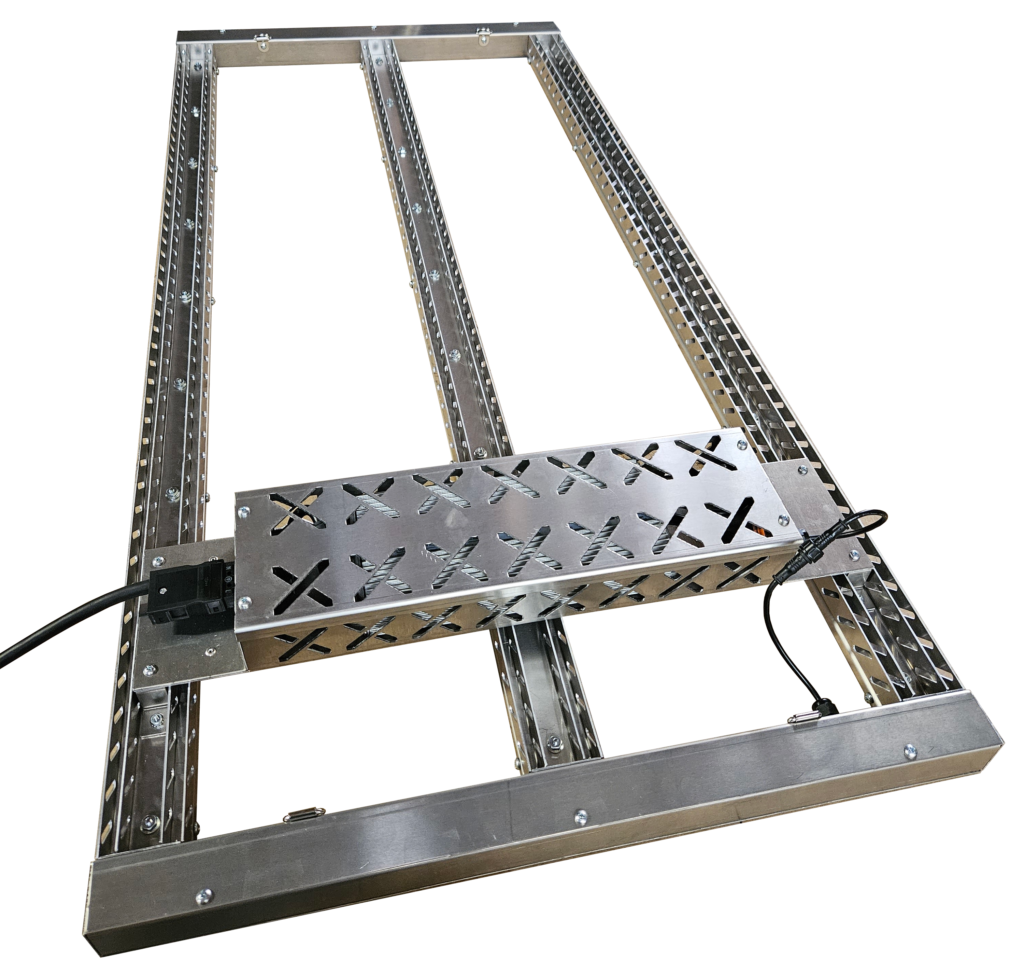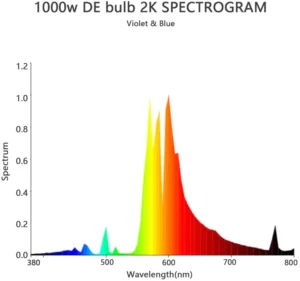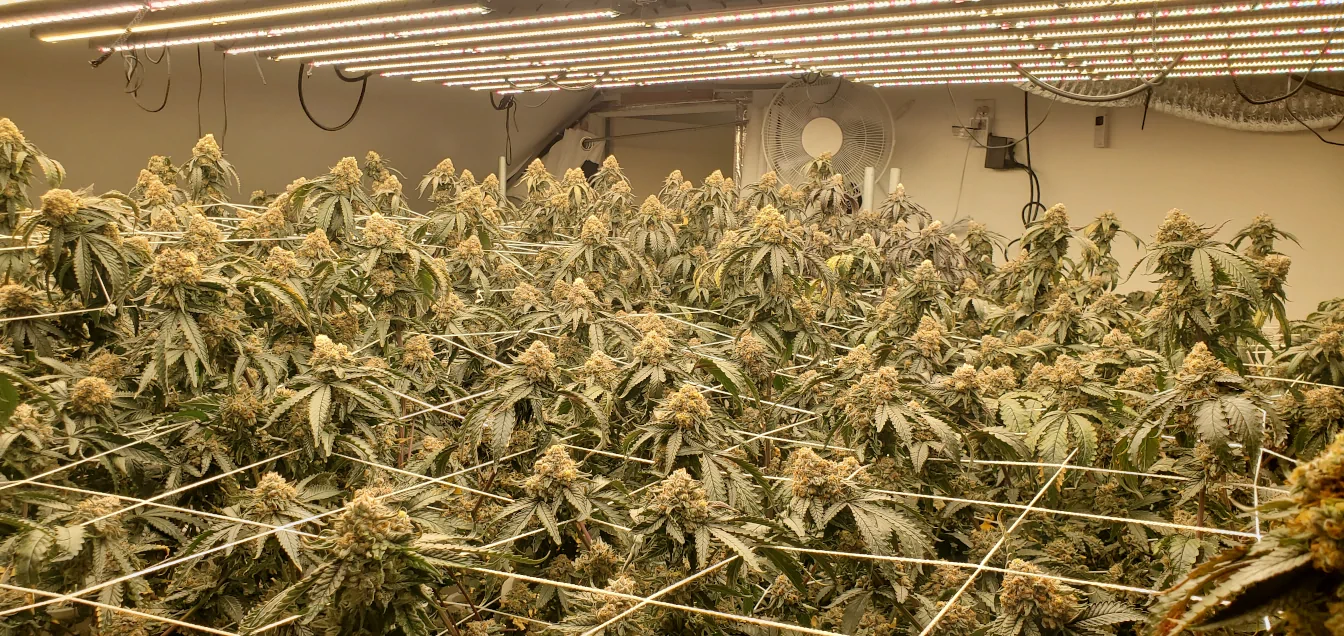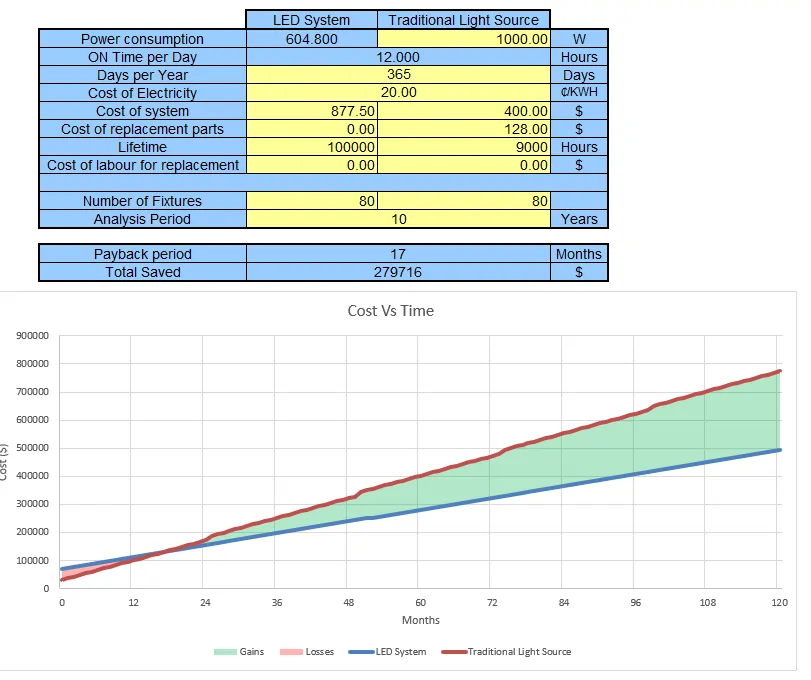As the indoor gardening industry continues to expand, so does the quest for high-quality, energy-efficient lighting solutions that promise remarkable plant growth. One unit that is making waves is the 1000W HPS equivalent LED grow lights, which have heralded a new way of thinking in horticultural lighting technology. Offering crystal clear advantages over traditional methods, these LED lights are not only minimizing energy use but also revolutionizing indoor farming. In this post, we’re diving deep into the best LED grow lights equivalent to 1000W HPS. These innovative grow lights, which provide plants with essential nutrients through light, are saving growers both time and money. Buckle up as we bring you closer to achieving your most lavish indoor garden yet, complete with a canopy of lush greenery, under a wealth of LED light!
While many LED grow lights claim to be equivalent to 1000W HPS lights, it’s important to question all information and keep in mind that HPS lights still generally offer fair efficiency. That being said, some high-quality LED grow lights that are recommended include the Excalibur, Pulsar, Aegis, and Excalibur Mini. It’s important to consider factors such as uniformity and distribution of PPFD when selecting an LED grow light unit. These are factors that can greatly impact the way plants receive nutrients and thus, significantly impact plant growth and yield.

Gone are the days when High-Pressure Sodium (HPS) lights were the go-to choice for indoor gardening. LED grow lights have revolutionized the industry, providing energy efficiency and superior results, making every money spent worth it. When looking for equivalent LED grow lights to a 1000W HPS, it’s essential to consider brands that deliver high-quality performance, replicating not just the intensity but also the nourishing light spectrum of traditional HPS lights.
The best LED grow lights that can match the output of a 1000W HPS include options like Excalibur 640C, Pulsar 800w, and Aegis 600w. These efficient lights help create an indoor canopy of thriving plants all the while providing similar power consumption. This way, growers get optimal spectrum coverage for growth stages like vegetative and flowering without the massive energy bills.
Excalibur 640C is known for its excellent performance, with high-efficiency white light using Ledestar EVO diodes. Its optimal light provides the right nutrients for all plant growth stages. Plus, it has a maximum coverage area of 5’x5′. This light ensures efficient energy usage- it’s an investment that not only saves your money but also doesn’t compromise on yield.
Pulsar 800w is another notable option that rivals the intensity and output of a 1000W HPS light. Its unique way of utilizing advanced UV to IR full-spectrum light technology and spectrum control is showing marketable improvements in flowering quality and yields. With a wide coverage area of 5’x5′, it provides ample space for your plant canopy to flourish at various stages.
Aegis 600w is respected for its high-performance 1 to 1 1000w HPS capabilities while consuming only 600 watts of power. Equipped with Samsung LM301H Evo diodes, it produces a balanced light spectrum suitable for all stages of plant growth. With an impressive coverage of 4’x4′, it offers sufficient space for multiple plants to thrive.
When considering equivalent LED grow lights to a 1000W HPS, it’s vital to evaluate their performance, efficiency, and coverage area. The question remains, which unit will provide the most nutrients for your indoor canopy? Each of these mentioned lights provides powerful solutions while keeping energy consumption in check.
Now that we have explored the equivalent LED grow lights, let’s delve into the key features to look for in these lights to ensure your money is well-spent and delivers optimal results for your indoor gardening endeavors.
Choosing the right LED grow light requires careful consideration of several key features. These are not mere trivialities, but deciding factors that can affect the way your plants receive essential nutrients, grow, and overall efficiency. These features include light spectrum, wattage, coverage area, build quality, and additional functionalities. The light spectrum is a critical aspect to replicate natural sunlight and support various stages of plant growth, catering to the needs of different veg and other types of plants. Look for grow lights that provide a full-spectrum output or have customizable spectrums to cater to specific needs during different growth phases. This is a lot to consider, but it’s the answer to providing the best care for your plants.
Wattage determines the power consumption of the LED grow light. While the equivalent LED grow lights to a 1000W HPS might consume fewer watts, it’s essential to choose one with an appropriate wattage suitable for your growing space. This is particularly important in ensuring that the ac, or air conditioning, doesn’t have to work over-time due to the extra heat the light can generate.
Coverage area refers to the size of the space that the LED grow light can effectively cover with its intensity. Consider the size of your indoor garden or grow tent and select a light that can adequately cover and provide sufficient illumination for all plants. This is especially crucial for people invested in indoor gardening, as proper exposure ensures healthy growth.
Build quality plays a crucial role in ensuring longevity and durability. Look for lights constructed with high-quality materials and efficient heat dissipation mechanisms to prevent overheating and extend the lifespan of the light. This is even more critical for fans of hydroponic systems, as these systems require strict temperature control.

Additional functionalities such as dimming options, timers, and programmable settings can enhance convenience and control over your indoor garden environment. These features allow you to tailor lighting conditions based on specific plant requirements or schedules. Sometimes, these small additions can mean a lot to the successful growth of your plants.
By considering these key features when choosing an equivalent LED grow light, you can ensure optimal conditions for plant growth and achieve successful indoor gardening outcomes. Remember, the aim is to replicate as close as possible the perfect conditions for your plants to thrive.
Grow-It-LED is renowned for its best in class models and being highly acclaimed among indoor gardeners. These lights offer full-spectrum lighting, energy efficiency, adjustable dimming options, and excellent coverage area to ensure optimal plant growth. Many people appreciate the effectiveness of these LED grow lights.
The Excalibur series is an incredibly innovative fixture with industry-leading fixture designs. The engineering team at Grow-It-LED has been hard at work to deliver cutting edge grow light technology. The latest iteration of the Excalibur Series offers incredible performance coupled with an intriguing reflector design that drastically increases the PPFD performance of the fixtures. The X and C series both come equipped with this technology standard. They also come equipped with Invenronics drivers, Ledestar LEDs (which we are now seeing better results from versus Samsung), robust all aluminum housings, beefy heatsinks, and bare metal finish for that illustrious industrial appearance.
The Pulsar Series is the next step in the Grow Light evolution. Grow-It-LED has put other grow light companies on their heels with the latest and greatest LED Full Spectrum UV to IR Grow light on the market. With three wattage options: 640w, 800w, and 1000w, these lights are sure to fill any growers’ tent up to full-fledged commercial facilities. With this new full spectrum monster, they are also offering a commercial grade fixture controller that can control up to 4 independent light channels with capabilities of up to 100 lights at once. From an industry stand point standpoint, this is unheard of! Expect the absolute highest yields and improved flavor profile on your next Cannabis grow using the latest tech from Grow-it-LED.
A simple yet highly effective grow light that is designed to replace 1000w HPS fixtures at a 1:1 ratio. The main offering is an industry standard 600w LED system that features high performance Samsung 301H EVO and 660nm V2 Red diodes that really pack a punch. Each fixture also comes with RJ12 ports to seemingly connect to your existing lighting control system, or go with their brand new GIL100 Touch Screen Controller to give yourself an edge over the competition. The Aegis series also offers many different spectrum options with custom options available upon request.
Step up your Veg game with these highly modular, efficient and robust bar-style LED Grow Lights. With an integrated driver, dimmer knob, and power switch, the Excalibur Mini gives you all the control you need in a slim, easy-to-use package. With several different spectrums to choose from, you would be hard pressed to find a vegging unit that performs as well as these. King Arthur himself would be proud to wield these Excaliburs!
Now that we have explored the offerings by Grow-It-LED, let’s delve into the science behind LED lights and compare them with High-Pressure Sodium (HPS) lights. This will be especially beneficial for any grower wishing to get hands-on experience in their facility.
Understanding the science behind LED (Light-Emitting Diode) and HPS (High-Pressure Sodium) lights is crucial for indoor gardeners seeking to optimize plant growth. Both types of lights emit specific wavelengths that plants require for photosynthesis. However, there are notable differences in efficiency, spectrum, and the watt distance relationship which can largely impact the value of these lights for growers and their facilities.
LED lights are designed to provide a full spectrum of light that closely mimics natural sunlight. They consist of tiny electronic components called diodes that produce light when an electric current passes through them. These diodes can be engineered to emit specific wavelengths suitable for plants’ different stages of growth. LED lights are highly efficient because they convert a higher percentage of energy into usable light while producing considerably less heat than other types of lighting systems such as high pressure sodium lights.
On the other hand, HPS grow lights emit light by passing an electric current through a mixture of gases within a glass chamber containing sodium vapor. This process produces light primarily in the yellow-orange-red spectrum, which is effective for stimulating flowering in plants. However, HPS lights have lower energy efficiency compared to LEDs and generate more heat during operation. This ultimately impacts the grower’s management of heat within the facility and may affect the overall value of using these lights for the long term. To give a deeper perspective, around 80% of the relative energy that an HPS grow light emits is heat, while LED lights only release around 15 to 25%.
Imagine you have a room full of plants in a facility that needs sufficient light to thrive. By using LED grow lights, you can provide them with the perfect spectrum of light required for photosynthesis, resulting in healthier and more productive plants. Additionally, LED lights emit less heat, reducing the risk of overheating and allowing the grower to place the lights closer to the plants without causing damage due to high leaf surface temperatures.
Some gardeners or facility managers may argue in favor of HPS lights because they have been used successfully for decades and are particularly effective for specific growth stages like flowering. However, advancements in LED technology have made them a preferred choice due to their efficiency, adjustable spectrum options, longer lifespan, and reduced energy consumption, making them higher value lighting systems.
When it comes to choosing the right grow lights for indoor gardening, intensity and spectrum are two crucial factors that must be considered. Intensity refers to how much light reaches the plants, while spectrum refers to the specific wavelengths of light emitted by the grow lights. This comparison between LED grow lights and 1000W HPS helps shed light on their differences in terms of intensity, spectrum, and value for growers and their facilities.
LED grow lights are often marketed as equivalent to 1000W HPS (high-pressure sodium) lights in terms of performance and energy savings. However, it is essential to consider the efficiency, uniformity of light distribution, and the watt distance relationship when evaluating the intensity factor, as these aspects majorly affect a grower’s choice in upgrading their facility. HPS lights, often seen firing up the 1000w bulbs, have been the industry standard for many years, particularly for cannabis cultivators during the budding and harvest stages. They generally offer worse efficiency than current LED grow lights due to factors such as power supply and reflector losses, not to mention their lower PPF (photosynthetic photon flux), a key element for thriving cannabis buds.
Now let’s delve into an in-depth analysis of the advantages of using LED grow lights over traditional HPS methods, such as the hps 1000w.
LED grow lights have gained popularity among indoor gardeners, especially cannabis growers, for several compelling reasons. One clear advantage is their energy efficiency. LEDs consume significantly less energy compared to traditional HPS lights, such as the hps 1000w, resulting in substantial cost savings over time. Moreover, LEDs have a longer lifespan, reducing the need for frequent replacement and further driving down maintenance costs.

HPS Spectrum

Grow-It-LED Pulsar Spectrum
One key element to the intensity debate over LED and HPS lights is that the equivalency of wattage does not equal the equivalency of produced photons. A 600w LED Grow Light can easily match a 1000w HPS light in terms of raw produced photons. If the 1000w hps has an efficiency of 1.7 Umol/J (Micromole per Joule), then it produces around 1700 Umol/s (Micromole per second). The LED fixture can produce the same amount of light if it has an efficiency of 2.83 Umol/J, which current grow light companies are offering, like Grow-It-LED.
Furthermore, LED grow lights offer a more tailored spectrum for optimal cannabis plant growth. With adjustable spectrums, growers can fine-tune the light output to match specific plant requirements during different stages of growth, from the seedling to the harvest stage. From seedling to flowering, LEDs allow users to provide the ideal combination of blue, red, and white light needed for sturdy cannabis bud development.
Another advantage of LED grow lights lies in their compact size and flexibility. Unlike bulky HPS fixtures, LEDs are available in various form factors such as bars or panels that can be easily mounted or arranged for proper coverage. This flexibility enables growers to optimize light distribution and create customized lighting setups specific to their cannabis plants’ needs.
For instance, consider a small apartment with limited growing space ideal for an indoor cannabis harvest. LED grow lights can be strategically positioned in the tightest of corners or mounted vertically, maximizing every inch of available area. This level of versatility is invaluable when it comes to maximizing crop yield in constrained environments.
Moreover, LEDs produce less heat compared to HPS lights, minimizing the risk of heat damage to sensitive cannabis plants. This lower heat output also contributes to decreased ventilation requirements and helps maintain a more stable and controlled growing environment. This also allows for closer fixture placement to the canopy furthering the yield that would be expected due to higher amounts of photons hitting the surface of the plants.
While the benefits of LED grow lights are undeniable, it’s important to note that they do come with a higher upfront cost compared to HPS lights, including the HPS 1000w. However, the long-term savings in energy consumption and reduced maintenance expenses often make up for this initial investment. Additionally, technological advancements continue to drive down the cost of LED grow lights, making them more affordable and accessible for indoor cannabis gardeners.

When it comes to choosing the best lighting system for indoor cannabis gardening, the debate between LED and hps 1000w grow lights is at the forefront. Both options have their advantages and considerations, making it crucial to conduct a cost-benefit analysis before making a decision.
One significant factor to consider is the upfront investment cost. HPS lights tend to be more affordable, with an hps 1000w light fixture costing under $300, while a comparable LED light could be almost twice as expensive. This initial price difference can undoubtedly make HPS lights appealing for those starting out with cultivating cannabis plants indoors or on a tight budget.
The last blow to the HPS versus LED debate is something not a lot of people focus on. LEDs are prime for producing a higher yield compared to their older cousin HPS. Grow-It-LED has proven results from their Commercial Grade Grow Lights. They have seen upwards of 3.5 pounds per light! Standard HPS pounds per light are barely scratching at 2 to 2.5 lbs. After one successful commercial grow with LEDs, they have already paid for themselves with a higher yield.
When it comes to choosing the best lighting system for indoor gardening, the debate between LED and 1000W HPS (High-Pressure Sodium) grow lights is at the forefront. Both options have their advantages and considerations, making it crucial to conduct a cost-benefit analysis before making a decision.
One significant factor to consider is the upfront investment cost. HPS lights tend to be more affordable, with a 1000W HPS light fixture costing under $300, while a comparable LED light could be almost twice as expensive. This initial price difference can certainly make HPS lights appealing for those starting out with cultivating plants indoors or on a tight budget.
However, energy efficiency is where LED grow lights shine. LEDs can operate up to 40% more efficiently than HPS lights, resulting in significant long-term savings on electricity costs. The energy savings from using LEDs could potentially cover the higher upfront investment in LED technology over time. This advantage becomes even more prominent for larger-scale indoor growers who require multiple lighting fixtures.
Another critical aspect to compare is the light spectrum provided by each type of lighting. LEDs offer a full spectrum of light that is ideal for both vegetative growth and flowering stages of plants. They provide wavelengths across the entire spectrum, including blue, green, red, and even UV and IR ranges that can enhance plant growth and development at every stage. On the other hand, 1000W HPS lights are known for their dominant red wavelengths, which are particularly beneficial during the flowering stage.
One important note about heavy red light when flowing cannabis. Studies show that this might not be advantageous for growers to use such high amounts of red due to the fact it causes photo bleaching in top level cannabis buds. The photo bleaching was shown to reduce as the percentage of red photons compared to the total photons decreased.
Light intensity and penetration are also essential factors to consider. LEDs disperse light evenly across the entire footprint of the growing area with minimal losses, ensuring that all plants receive adequate light. In contrast, HPS lights produce intense light in the center but have limited distribution and may require additional reflectors or reflective interiors to maximize coverage.
Heat production is another crucial consideration, especially for indoor gardeners. LEDs produce significantly less heat compared to HPS lights, which means less strain on cooling systems and the potential for reduced risks of heat damage to plants. The modern design of LEDs also helps dissipate heat above the fixture, minimizing any potential issues related to excessive heat buildup.
Lifespan and maintenance costs are important long-term considerations. LED grow lights have a longer lifespan of over 50,000 hours compared to HPS bulbs, which typically require replacement multiple times a year. This can lead to cost savings in terms of bulb replacements and labor for commercial growers.
Ultimately, the choice between LED and 1000W HPS grow lights depends on a variety of factors such as budget, energy efficiency goals, desired light spectrum, coverage needs, heat concerns, and long-term maintenance considerations. It is essential to assess your specific requirements and priorities when deciding which lighting system best suits your indoor gardening endeavors.
In conclusion, while HPS lights may offer initial cost advantages and cater well to specific flowering stages with their dominant red wavelengths, LED grow lights present numerous benefits such as energy efficiency, full spectrum lighting for all growth stages, even light distribution, reduced heat production, longer lifespan, and potential savings in maintenance costs. Carefully evaluating these factors will help you make an informed decision that aligns with your goals and budget in achieving optimal indoor gardening results.